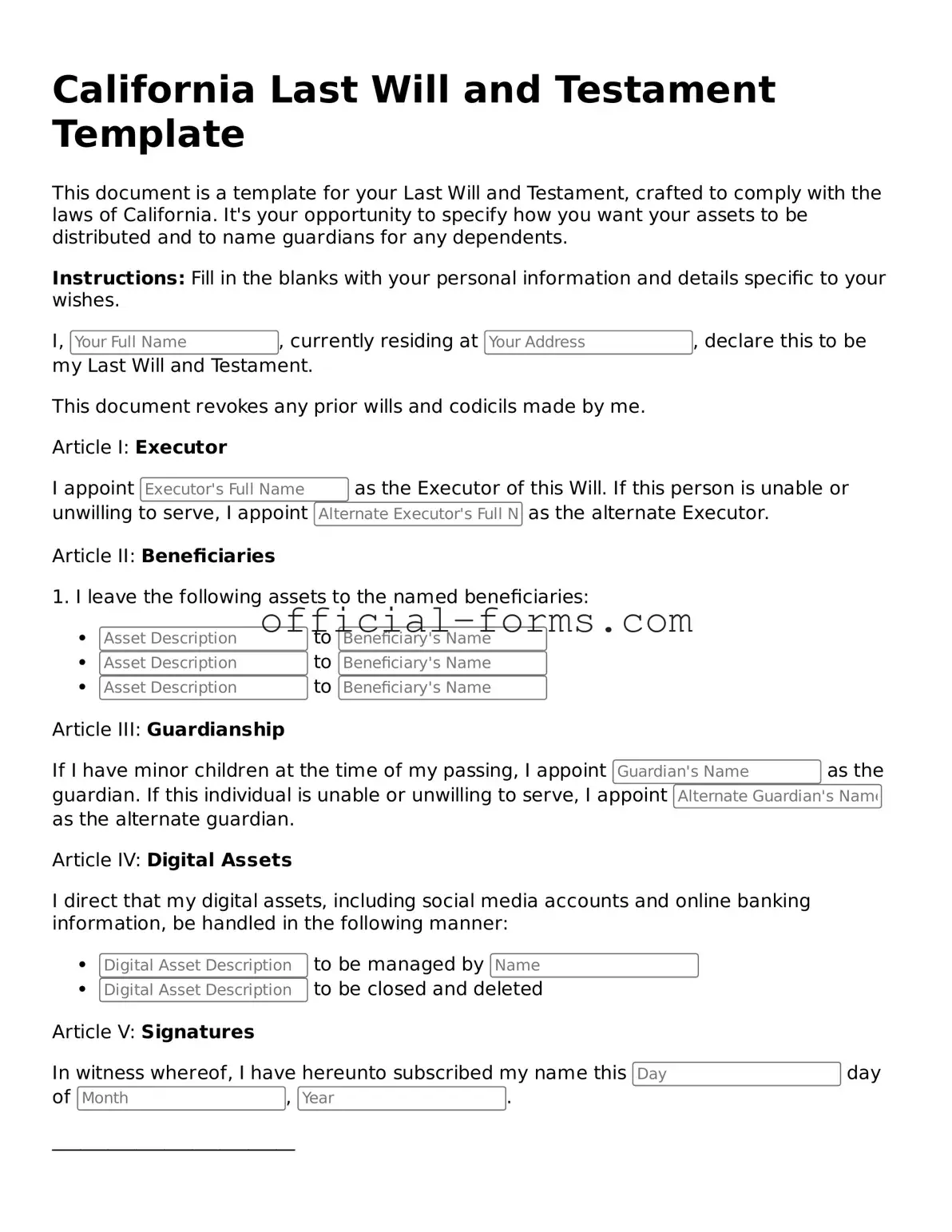Filling out a California Last Will and Testament form can seem straightforward, but many people make common mistakes that can lead to complications later. One of the most frequent errors is failing to sign the will. A will must be signed by the person creating it, known as the testator, to be valid. Without a signature, the document may not hold up in court.
Another mistake is not having witnesses present during the signing. California law requires that the will be witnessed by at least two people who are not beneficiaries. If this step is overlooked, the will could be challenged, and its validity could be questioned.
Some individuals also forget to date the will. Including the date is crucial because it helps determine which will is the most recent. If there are multiple versions of a will, the court may face difficulties deciding which one to honor.
Additionally, people often neglect to clearly identify their beneficiaries. It’s essential to use full names and, if possible, their relationship to the testator. Vague language can lead to confusion and disputes among family members after the testator passes away.
Another common error is failing to specify how debts and taxes will be handled. A will should outline how to pay off any outstanding debts or taxes before distributing assets. Without this information, the estate may face unnecessary delays and complications.
People sometimes forget to include alternate beneficiaries. Life can be unpredictable, and circumstances may change. If a primary beneficiary passes away or is unable to inherit, having an alternate named ensures that the testator’s wishes are still honored.
Moreover, some individuals do not update their wills after major life events. Changes such as marriage, divorce, or the birth of a child should prompt a review of the will. Keeping the document current helps avoid confusion and ensures that it reflects the testator's current wishes.
Lastly, many fail to keep the will in a safe but accessible place. Storing the will in a safe deposit box without informing loved ones can create problems when it’s time to execute the will. It’s important to inform trusted individuals about where the will is located.
By avoiding these mistakes, individuals can help ensure that their Last Will and Testament accurately reflects their wishes and stands up to legal scrutiny.
